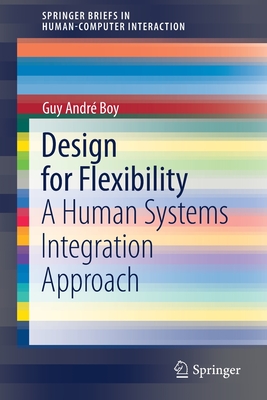Design for flexibility requires anticipation, preparation, creativity and experience. Future highly digital sociotechnical systems should contrast with those stemming from technology-centered engineering that produces objects and machines with the immensely codified and rigid practices we know today. Most of the time, current technologies are designed and developed for normal situations, leaving users to manage abnormal and emergency situations themselves, sometimes under unforeseen, extreme and/or dangerous conditions. Putting humans at the center of the design of flexible sociotechnical systems means visualizing possible futures, modeling them, simulating them and leading them down the right paths. This book is for the engineering designers, who seek to better understand the roles of humans and organizations developing complex life-critical systems. It is also for those who train future designers who will have to take into account the well-being, safety, sustainability and efficiency of the actors of future sociotechnical systems. It is about an emergent discipline, human systems integration (HSI). The aim of the flexibility challenge is to put the artificial at the service of the natural, and not the other way around. The author, an aerospace engineering designer, has worked for 40 years in the field of human-centered design (HCD) of complex systems, discovering repeatedly that automation leads to rigidity, especially when things go wrong. It is urgent we had a new paradigm where flexibility is a major asset in human systems integration. HCD is seen here as the combination of practices and technologies to come.
Design for flexibility requires anticipation, preparation, creativity and experience. Future highly digital sociotechnical systems should contrast with those stemming from technology-centered engineering that produces objects and machines with the immensely codified and rigid practices we know today. Most of the time, current technologies are designed and developed for normal situations, leaving users to manage abnormal and emergency situations themselves, sometimes under unforeseen, extreme and/or dangerous conditions. Putting humans at the center of the design of flexible sociotechnical systems means visualizing possible futures, modeling them, simulating them and leading them down the right paths. This book is for the engineering designers, who seek to better understand the roles of humans and organizations developing complex life-critical systems. It is also for those who train future designers who will have to take into account the well-being, safety, sustainability and efficiency of the actors of future sociotechnical systems. It is about an emergent discipline, human systems integration (HSI). The aim of the flexibility challenge is to put the artificial at the service of the natural, and not the other way around.
The author, an aerospace engineering designer, has worked for 40 years in the field of human-centered design (HCD) of complex systems, discovering repeatedly that automation leads to rigidity, especially when things go wrong. It is urgent we had a new paradigm where flexibility is a major asset in human systems integration. HCD is seen here as the combination of practices and technologies to come.
Get Design for Flexibility by at the best price and quality guranteed only at Werezi Africa largest book ecommerce store. The book was published by Springer Nature Switzerland AG and it has pages. Enjoy Shopping Best Offers & Deals on books Online from Werezi - Receive at your doorstep - Fast Delivery - Secure mode of Payment
 Jacket, Women
Jacket, Women
 Woolend Jacket
Woolend Jacket
 Western denim
Western denim
 Mini Dresss
Mini Dresss
 Jacket, Women
Jacket, Women
 Woolend Jacket
Woolend Jacket
 Western denim
Western denim
 Mini Dresss
Mini Dresss
 Jacket, Women
Jacket, Women
 Woolend Jacket
Woolend Jacket
 Western denim
Western denim
 Mini Dresss
Mini Dresss
 Jacket, Women
Jacket, Women
 Woolend Jacket
Woolend Jacket
 Western denim
Western denim
 Mini Dresss
Mini Dresss
 Jacket, Women
Jacket, Women
 Woolend Jacket
Woolend Jacket
 Western denim
Western denim
 Mini Dresss
Mini Dresss




